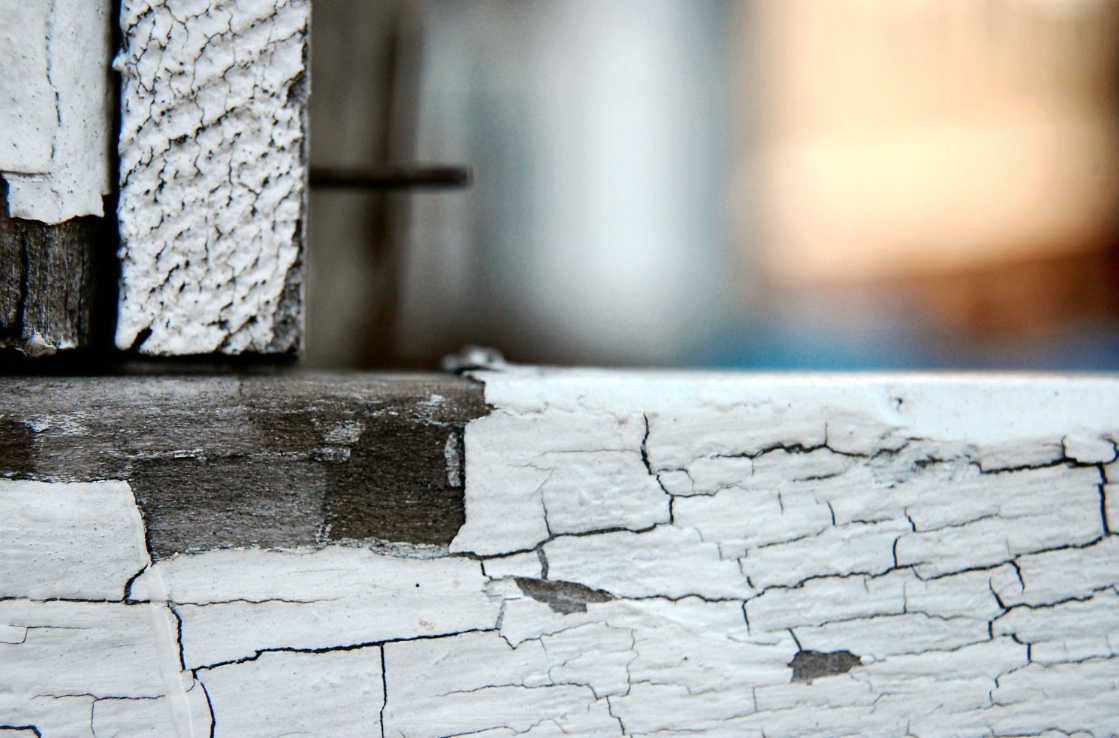As experienced designers, contractors, and owners know, most paint and coating problems are correctable, but some are especially stubborn to address. The following is a partial compendium of typical failure modes and methods for addressing the problem, as provided by paint and coatings manufacturer Benjamin Moore & Co. (www.benjaminmoore.com):
1. Surface imperfections.
There are many types of imperfections that can be visible on painted or sealed surfaces. Alligatoring occurs when the paint film takes on the appearance of alligator hide. (A similar problem is known as wrinkling, which appears as a rough creased or crinkled pattern.) Alligatoring usually occurs when a topcoat is applied before an undercoat is dry, or if an alky enamel or other hard, rigid coating is applied over a latex primer or another more flexible finish layer. Some oil-based coats will lose elasticity as they age, causing this familiar cracking pattern.
2. Blistering.
Blistering (or bubbling) is caused by a localized loss of adhesion and lifting of the paint film from the underlying surface, sometimes when solvent gas expands on sunny façades. Blistering tends to occur in fresh coats of paint.
Both problems require removing as much paint as possible and repainting. However, blistering can immediately reappear if the problem is caused by moisture; to mitigate this problem, the contractor should repair loose caulk and retrofit drainage and drying details, if possible. Installing vents or exhaust fans can also reduce moisture by evaporation before it wets enclosure materials.
For alligatoring, most paint contractors will recommend completely remove the existing oil paint by using a heat gun, scraping, and sanding. After priming the reworked surface with a high-quality latex or oil-based primer, the area can then be recoated with exterior latex or similar paint.
3. Flaking and chalking.
In some cases, a painted or coated surface will exhibit a loose powder or flaking surface. These problems are caused by decomposing paint and are different from efflorescence or mottling, which display white, crusty mineral salt deposits that have leached from mortar, concrete, or masonry surfaces behind the paint. A similar problem known as frosting is often seen on dark paints and coatings; in this case, a white discolored substance appears on the surface, similar to salt staining.
Chalking paint may be washed by rain and cause patterns, or it may wash across other surfaces, an effect called chalk rundown.
4. Miscoloring and staining.
Other sources of miscoloration on exterior and interior surfaces include nailheads and other penetrations that leach a rust-colored stain onto a surface, which often trails down from the location of the hardware. Mildew appears as black, gray, or brown spots or areas on the paint film or caulk bead.
5. Surfactant leaching.
Another source of undesired color change is surfactant leaching, in which concentrated, water-soluble ingredients in latexes seep to the paint surface, often creating a brownish blotchy or shiny appearance. Tannin staining can also be a brownish or tan discoloration on the paint surface, caused by wood tannins that leach through the paint film.
When applied properly onto suitably prepared substrates, architectural coatings will rarely exhibit these kinds of failures. Even better, when integrated into a thoughtful sustainability program, paints and coatings can be a partner in effective building designs that promote improvements to project economics and social considerations as well as protecting the environment.
Related Stories
| May 14, 2012
SOM to break ground on supertall structure in China
The 1,740-feet (530-meter) tall tower will house offices, 300 service apartments and a 350-room, 5-star hotel beneath an arched top.
| May 14, 2012
Adrian Smith + Gordon Gill Architecture design Seoul’s Dancing Dragons
Supertall two-tower complex located in Seoul’s Yongsan International Business District.
| May 14, 2012
ArchiCAD e-Specs integration unveiled
Architects, engineers and construction professionals use InterSpec’s e-SPECS products on thousands of projects annually to maintain synchronization between construction models, drawings, and project specifications.
| May 11, 2012
Betz promoted to senior vice president for McCarthy’s San Diego Office
He will oversee client relations, estimating, office operations and personnel as well as integration of the company’s scheduling, safety and contracts departments.
| May 11, 2012
AIA launches education and training portal
New portal to host Contract Documents training, education resources in one convenient place.
| May 9, 2012
Tishman delivers Revel six weeks early
Revel stands more than 730 feet tall, consists of over 6.3 milliont--sf of space, and is enclosed by 836,762-sf of glass.
| May 9, 2012
Stoddert Elementary School in DC wins first US DOE Green Ribbon School Award
Sustainable materials, operational efficiency, and student engagement create high-performance, healthy environment for life-long learning.
| May 9, 2012
Shepley Bulfinch given IIDA Design award for Woodruff Library?
The design challenges included creating an entry sequence to orient patrons and highlight services; establishing a sense of identity visible from the exterior; and providing a flexible extended-hours access for part of the learning commons.
| May 9, 2012
Construction Defect Symposium will examine strategies for reducing litigation costs
July event in Key West will target decision makers in the insurance and construction industries.
| May 8, 2012
WDMA and AAMA release window, door & skylight market studies
Historic data for 2006 through 2011 and forecast data for 2012 through 2015 are included in the report.

















